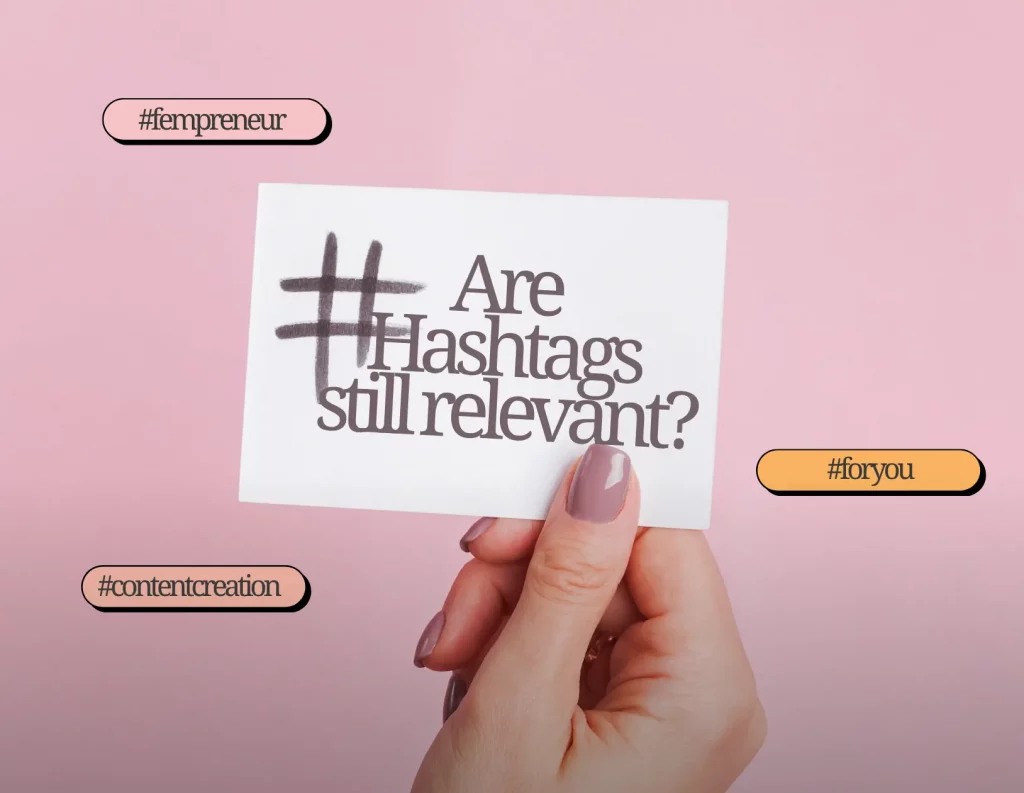
You pour your heart into your content — but wonder if hashtags still do anything for you? These little keywords with a pound sign (#) show up everywhere on social media. But are they even relevant in 2025? And more importantly: how can you use them strategically to actually increase your reach and engagement?
Let’s break it down.
What is a hashtag, anyway?
A hashtag is a keyword marked with a #. It originally came from the tech world and was meant to help categorize and index information — making it easier to find. Think of a hashtag like the index in a book: with one click, you can find all content tagged with the same word.
The original purpose of hashtags
Hashtags were created to help collect, structure, and display content to users more efficiently. Back when social media algorithms didn’t exist, hashtags were essential for discovery.
Instagram and similar platforms were basically searchable databases that relied on users tagging content correctly so it could be found.
hink of it like a Google search: if you type “blue sky,” Google has to know which images contain a blue sky in order to show you relevant results. Hashtags did exactly that — they helped platforms understand what your content was about and who should see it.
Do hashtags still help with reach in 2025?
Short answer: Yes — but only if you use them strategically.
Back in the day, it was common to use as many hashtags as possible: #LatteMacchiato #Summer #BlueSky #Aesthetic #ForYouPage and so on. Quantity mattered more than quality. The goal was simple: appear in as many topic feeds as possible. Remember: only through keywords could your content be found at all therefore the more topic clusters your post was visible in, the higher the chance of being seen.
But social media has evolved — and so have hashtags. Algorithms can now analyze text and visuals independently. They don’t necessarily need you to explain what your post is about anymore. But — and this is key — algorithms still make mistakes.
That’s where hashtags come in.
Imagine you post a picture of the ocean. The algorithm detects: water, beach, vacation — and shows it to users who like travel or tropical content. Perfect, right? Well — yes, if you’re a beach bar owner or travel blogger.
But what if the image is just a backdrop, and your caption shares “3 mistakes people make when building a business” or a personal story about moving abroad? Suddenly, your content reaches beach lovers — not your target audience.
Hashtags help add context to your content. And guide the algorithm in the right direction. But to do that, you need to treat hashtags like a strategic tool, not decoration.
Why irrelevant hashtags can hurt your reach
Back then, hashtags were all about visibility. Today, it’s all about relevance. People scroll with intention now. They want content that actually matches their interests. So, your visual, caption, and hashtags need to work together.
Let’s say you’re a florist. If you tag your bouquet with #LatteMacchiato, you might catch the eye of coffee lovers — but not necessarily people who want to buy flowers.
The result? Your post might be seen — but not liked or commented on. Bad engagement = bad signal to the algorithm = less reach next time.
Hashtags in 2025: Are they still necessary?
Algorithms are so smart today that they can analyze text and images independently. Many people are therefore asking: Does this make hashtags obsolete?
No. Hashtags aren’t obsolete; they’re more important than ever—but only when used strategically. Hashtags are your oppportunity to push the algorithm in the right direction, they are your chance to send a clear signal: “Hey algorithm, this is what my post is really about.” Without hashtags, you let the platform guess. With the right ones, you give it boundaries to work within. And that can make all the difference.
How to use hashtags strategically in 2025
Before adding a hashtag, ask yourself:
- Is this hashtag something my audience would actually search for?
- Does my content truly answer that search intent?
- Does the hashtag support my message — or dilute it?
If you can say “yes” to all three, you’re on the right track.
Quality over quantity: Less is more
You no longer need 30 random hashtags. In fact, 3 to 5 carefully chosen ones work much better. Forget keyword-stuffing. Forget generic tags.
Don’t tell the algorithm what it already sees (e.g., #sunset, #flower) — tell it what it can’t see (e.g., #buildyourbrand, #creativebiztips).
Relevant hashtags help the algorithm categorize your content and deliver it to people who truly care about your message — and your offers.
TL;DR: Are hashtags still relevant?
Yes — when used with purpose. Hashtags in 2025 are no longer a visibility hack. They’re a strategic tool to guide algorithms, attract the right audience, and improve long-term content performance.
Choose your hashtags carefully — and they’ll amplify your voice.
Because in the end, you don’t just want your content to be seen —
you want it to be heard.



